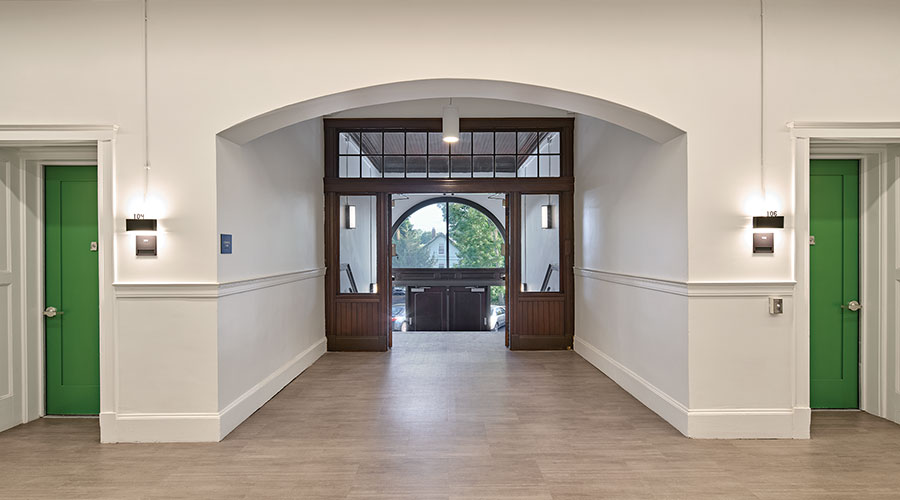Allagash Brewing Uses Advanced Temperature Controllers To Keep Beer Cold
January 14, 2016
Allagash Brewing Company of Portland, Maine, is one of the premier craft breweries in the United States. Founded in 1995 to handcraft “the best Belgian-inspired beers in the world,” the company produces more than a dozen year-round and seasonal beers that are sold around the country. In addition to being viewed as a leader in innovative brewing techniques, environmental and social responsibility is a core value at Allagash, where the brewery is constantly working to lessen the environmental impact of its operations.
While there are several variables that come into play with creating a superior product, temperature control is one of the most critical when it comes to achieving the high quality and consistency that Allagash is known for. As such, the company installed controllers in its production plant to monitor temperatures and control chillers and boilers.
However, Allagash stores most of its beer in a remote warehouse located four miles away, and only had simple thermostats installed. To assure that proper temperature levels were maintained at the warehouse – the refrigerated room must be kept between 58 and 62 degrees Fahrenheit and the warm room needs to be at 72 degrees Fahrenheit – the company trained and relied on its staff to manually check temperatures when they were on duty. With this method, there was no way to monitor temperature levels after hours, immediately flag critical fluctuations or document temperature trends over time.
To improve monitoring and control of warehouse temperatures, in early 2014 the company decided to replace existing thermostats with advanced controllers that could integrate with its other environmental systems. Allagash also wanted to expand its system to be able to set up alarms and alerts, track energy use over time and integrate temperature controls with other systems so it could more effectively and efficiently manage its facilities.
“Superior quality is part of our core mission, and we knew that upgrading our environmental control technology would help us fulfill that mission,” said Sean Diffley, plant engineer, Allagash Brewing Company.
To handle this project, Allagash called in Maine Controls, a companion company of Mechanical Services, Inc., and leading provider of energy management systems in the state, which previously installed the heating, ventilation and air conditioning control systems at the company’s brewery plant.
However, Allagash’s warehouse presented Maine Controls with a few challenges. Like many warehouses, the facility is comprised of large rooms and 40 foot ceilings. Given the large spaces in the warehouse, it was not practical nor time- or cost-effective to run the wiring that typical controllers require through the building. Following an evaluation of the warehouse and Allagash’s needs, Maine Controls recommended implementing Schneider Electric’s SE7600 wireless room controllers. The controllers support standards such as LonWorks, BACnet, MS/TP, Echelon LonTalk and Wireless ZigBee, enabling easy integration into network systems and eliminating the need for wiring.
By eliminating wiring and leveraging controllers with wireless and open technology, Maine Controls was able to decrease total installation cost and time. This interoperability enabled Maine Controls to install, configure and commission the new controllers in a few days and Allagash to quickly implement the new solution. In addition, the interoperability of the controllers bridged the gap between standalone sensors and the company’s building management system to deliver simplified automation and communications.
Installed in both the refrigerated and warm rooms, the controllers monitor the air conditioning equipment and are integrated into Schneider Electric’s ENC-520 Enterprise Network Controller. The controller provides integrated control, supervision and network management.
Finally, using Schneider Electric’s Enterprise Network Server, Maine Controls created a custom-designed graphical interface for Allagash, featuring simple-to-understand drag and drop graphic representations of common control algorithms and functions, and easy-to-use wizards that automate controller configurations. The system’s graphical views can be accessed by Allagash’s staff using any standard web browser.
With the new solution in place, Allagash quickly went from relying on simplistic thermostats and employees manually checking temperatures to trend-logging temperatures to gather insights about what is happening in the warehouse over time. The brewery has also set alarms that contact personnel when the temperatures are out of range, freeing up employees that were previously tasked with manual monitoring to attend to other duties.
The controllers can be managed remotely, enabling managers to see what is happening in the facility – no matter what time of day or where they are located. Alarms can also be sent straight to these managers’ mobile devices.
“If we have an issue with temperature, we now know about it right away,” said Diffley. “Storage temperatures can be just as important as brewing temperatures. We see this upgrade as another essential step in making the world’s finest Belgian-inspired beers.”
When Allagash saw how simple and effective the warehouse monitoring solution was, it expanded the solution and installed additional SE6700 units in the company’s offices, which are part of the brewing plant in Portland. These thermostats were implemented to control rooftop units and are tied to the network and web interface.
With the added flexibility and scalability of the solution, Allagash now has a single, integrated system for monitoring and controlling temperatures in all of its facilities – from offices to the plant to the warehouse. In addition, Maine Controls was able to integrate old chillers and boilers that use a different network protocol, due to the open protocols and interoperability of the solution. While this positively impacts production, it also made conditions on the brew deck much more livable for the staff compared to the hot and humid environment that existed before the solution was implemented.
Added Diffley, “We’re just beginning to understand how we can use this integrated view of operations to reduce energy use, and most importantly, improve quality.”
Read more about sophisticated controls systems.
Next
Read next on FacilitiesNet







